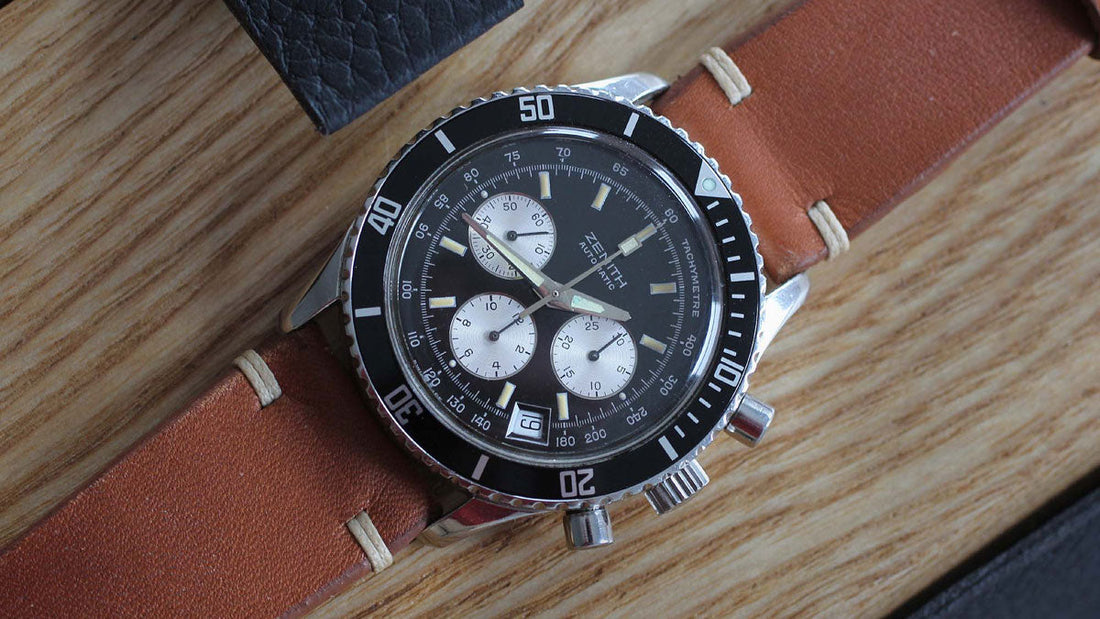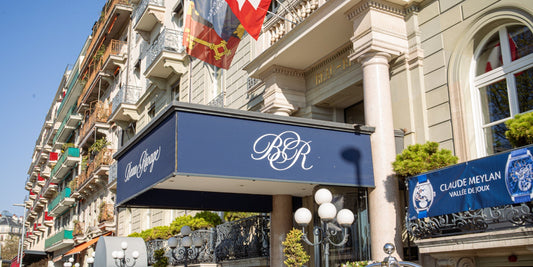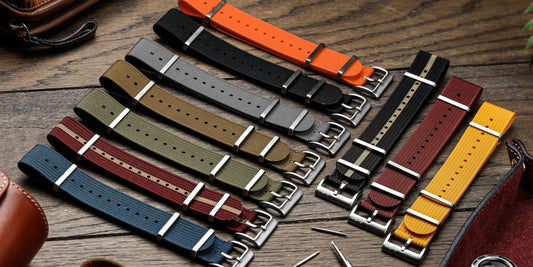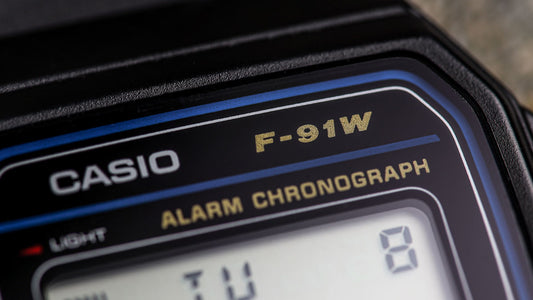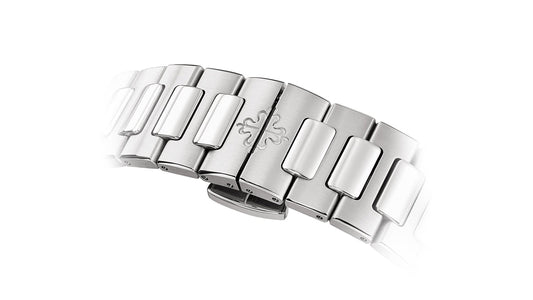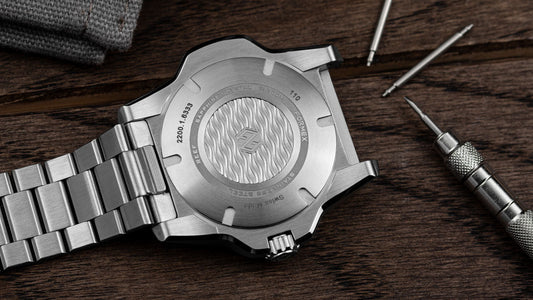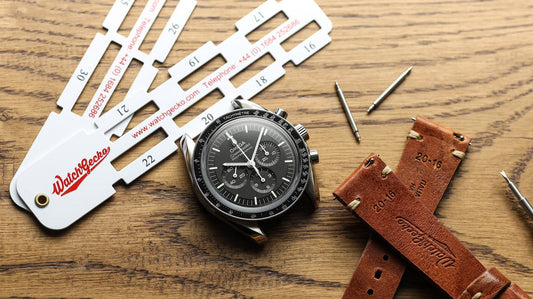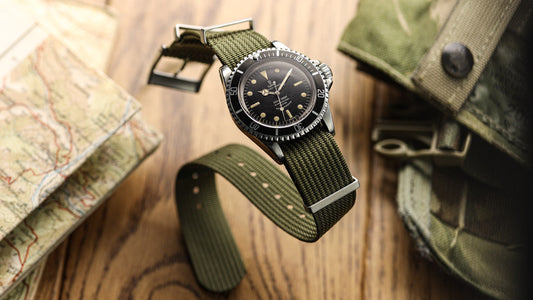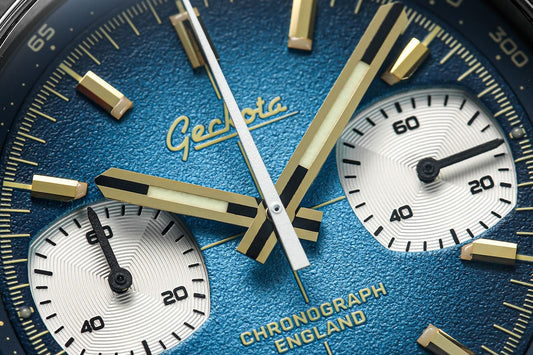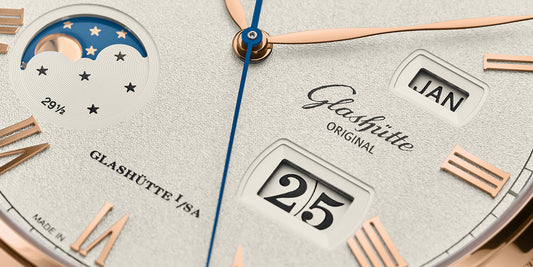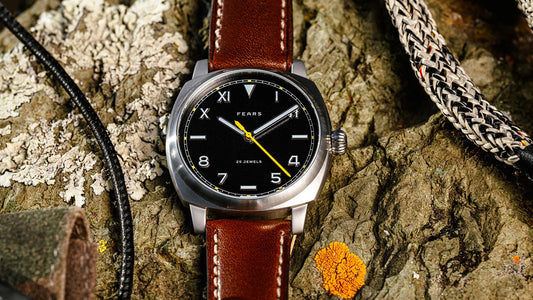A chronograph steeped in history and legendary stories...
The Zenith De Luca is one of the few watches that has its own founding myth. It is a watch that now commands an elevated, but oddly inconsistent position in the minds of collectors. Today we’d like to chart the evolution of this model to date, in reference to my own example, a Series 1.

Zenith De Luca - Image Credit: Dave Sweeting
The Movement
The Zenith El Primero movement is a legend in itself. Why? Because of being the first, because the movement was saved by the dedication of a single man, and because it still continues in production today, 50 years later. Despite the name, it was not the quite first automatic chronograph to be sold to the public in 1969. The jury is still out as to whether that was the Heuer/Breitling/Buren Cal 11 or, as most people now think, the Seiko 6139. The El Primero was third to market, by only a few months. But in terms of specification, it beats its rivals, hands down.
The table below shows some of the features that the Zenith had over the competition. Buren and Seiko had got their movements over the line, first and second, no doubt. However, Zenith didn’t just make a movement that got over the line, they made one that cleared every line in the vicinity, all the way to the long grass.
As a movement specification, this is one of the most spectacular home runs ever made. It moved the game several divisions in one leap. The fact that it is still in production and is the mainstay of Zenith’s current range, whilst the other 2 are long gone, is testament to that fact. Just look at the table below, the El Primero does it all, at a fast beat, and with Compax layout, to create the classic chronograph look.
| The Features of the 1968-9 First Automatic Chronograph Movement Contenders | |||
| Zenith El Primero | Buren Cal 11 | Seiko 6139 | |
| Beat Rate | 36,000 | 21,600 | 21,600 |
| Constant Seconds | Y | ||
| 30 Minute sub-dial | Y | Y | Y |
| 12-hr sub-dial | Y | Y | |
| Day | Y | ||
| Date | Y | Y | Y |
| Diameter (mm) | 30 | 31 | 27.4 |
| Thickness (mm) | 6.5 | 7.7 | 7.2 |
| Power Reserve (hrs) | 50 | 42 | 45 |
| Layout | 3 sub-dials at 3,6 and 9, date at 4.30 | 2 sub-dials at 3 and 9, date at 6 | Single sub-dial at 6, day and date at 3 |
The Redemption

Zenith De Luca - Image Credit: Dave Sweeting
The 1970s were not a pretty time for Swiss mechanical watch making, as the quartz crisis and overseas competition bit hard into the industry. Zenith was one of the companies most affected, the company was sold and the decision was made to cease production of the El Primero, which, despite its impressive specification, was complicated and expensive to produce. So, as parts of Zenith’s factory were abandoned, orders were given to scrap the production tooling in 1975.
One man, Charles Vermot, decided this was not going to happen. He had been part of the movement’s development through the 1960s and he was convinced it had a future. He made it his mission to save the movement, which he did by painstakingly moving every bit of the production presses, the dies and everything else, piece by piece, into the loft of one of the buildings, aided by a few colleagues, in their spare time.
As the 70s ended and the Swiss mechanical watch industry began to convince the world that mechanical watches still had attractions, interest returned to the El Primero. Luckily, the tooling was all still there, hidden in the loft, and not at the local scrapyard. Ebel ordered movements from Zenith at the start of the 1980s, which were supplied from existing stock, but then the movement’s future was secured by the arrival of Rolex.
Looking to update their Daytona chronograph, which to date had been manual winding, Rolex realised that the impressively slim El Primero suited them perfectly, as the original Cosmograph case depth could be maintained, even when housing an automatic movement, complete with the added thickness of its rotor.

Zenith De Luca - Image Credit: Dave Sweeting
Rolex demanded that changes be made, including a reduction of the beat rate, and the removal of the date mechanism, but they offered Zenith a massive opportunity, provided they could produce the desired movements. Charles Vermot led Zenith back to the loft, production began again in 1984, and Zenith’s masterpiece was saved. The El Primero went on to power all Rolex Daytona Chronographs for a dozen years, and it was, by some distance, the last outsourced movement to be used in a Rolex watch before eventually they developed and introduced their own.
The De Luca Itself

Zenith De Luca - Image Credit: Dave Sweeting
By the boom of the late 1980s, mechanical watches were once again thriving in the luxury end of the market. But apart from their lucrative deal with Rolex, Zenith were not cashing in. The story goes that the Italian import agent for Zenith was frustrated at the product line that was on offer from the company, and formulated the design brief for a new model because he was sure it would sell to his discerning Italian clients. His name was De Luca. We are not sure how much of the specification he generated, but the essence is one of a reverse panda dial (and a panda version too), 100m Water resistance, 0-60 uni-directional bezel and the El Primero movement. Not all of the design is new or innovative. The case itself, at 40mm diameter, with distinctive downturned lugs finished with large external chamfers, is entirely derived from Zenith’s 1960s manual-wound 146hp chronographs. The dauphine hands too are from earlier models, nothing new there. But sometimes, “parts bin specials” take on a life of their own.
Zenith agreed to the specification and made it. Production numbers for the model seem to indicate that the market reception was a little cooler than De Luca thought, with only 1025 made of the first iteration with black dial over 1988-9 before they started tweaking the design. The first series was most faithful to Zenith’s past, with a simple domed acrylic crystal, printed dial, simple pushers and an unsigned crown.
As the design evolved, the De Luca started to look a little more like the Rolex Daytona which had initially secured Zenith’s future. It got shrouded pushers and then screw-downs. Mercedes hands were introduced, as were round, applied indices and flat mineral (eventually sapphire) crystal. In total, between 1988 and 1996, 4085 were made with black dials (reverse panda), and 2350 with white (panda), split between 4 versions, of which the third was least made. The De Luca was then taken to a second generation and the rotating bezel was abandoned in favour of a fixed metallic tachymeter scale, once again aping the Daytona which Zenith knew was selling so well. Some purists do not consider these true De Lucas.
My one is from the first series, the original design.
A Series 1 De Luca

I bought my example back in 2010, one of the first departures I chose from collecting Lemania-powered watches. I specifically hunted down a series 1, for several reasons. At that time my collection was all vintage, so the aesthetic of domed acrylic crystal, traditional dauphine hands and so forth appealed more. Plus, it is rarely wrong to get the original version of a collectible, and when viewed in order, the De Luca “series” design progression looks like a journey away from its own originality. I had not actually handled one before, so was very pleasantly surprised to get my hands on it and look it over properly.
Several features really jump out on close inspection. The first is how deep the gloss black dial is. It is exceptionally black, in a way that a satin finish could never be, making it very legible. The next thing is the silver dial print. You would think that the dial markings would be white, but no, they’re silver. The dauphine hands are lovely, and the signature trapezoidal Zenith date window at 4.30 a nice quirk.
Originally the Series 1 was only offered on a leather strap, it was the series 2 that got the upgrade of a steel bracelet option. I am happy to have bought one that has the right bracelet added to it, as it is supremely comfortable, tapering from 22mm at the lugs all the way to 16mm at the clasp.
For me, this is the quintessential gentleman’s sporting chronograph. It tells you the time and date, you can use the bezel to time immersions, and the chronograph and tachymeter to measure the speed of your sports car. It is waterproof enough to wear for almost anything, and thin enough to slip under a shirt cuff.

Zenith De Luca - Image Credit: Dave Sweeting
Zenith are now part of the giant LVMH group, and seem comfortable in their own heritage. They have a broad offer over a number of innovative designs, as well as “heritage” models that resemble earlier watches from the 1920s all the way to the 1970s.
One thing that is ever-present in their range is the El Primero. Zenith and its movement are inseparable, it spans most of their ranges, popping up in original form, but also as a handwound movement, a time only movement, a chronograph with open heart, skeletonised, moonphase, full calendar and even striking tenth with a chronograph second hand that completes a full 360 degree rotation of the dial in a remarkably swift 10 seconds. The main movement architecture is clearly quite flexible and has been well utilised, in fact I think the only complication it has not been used for yet is an alarm.
Zenith sits round and about Omega in terms of pricing for their ranges, with El Primero chronographs starting from about £5k at RRP, roughly in line with Omega’s Co-Axial chronos. The continued quality of their finishing seems to justify the prices asked, but it has to be noted that used prices are a little softer than new buyers might like to see.
The Collectors’ View of the De Luca Market

Zenith De Luca - Image Credit: Dave Sweeting
The De Luca is a bit of an anathema in the collecting world, a world where certain vintage models have gained massive followings and made really quite startling gains in value in recent years.
Most collectors are aware of the De Luca model range, and able to appreciate the relative scarcity. They often respect and admire the movement, and also the maker. So, given its pedigree, and relative rarity, it is slightly strange that such price hikes have passed the De Luca by, and it seems to have been swept up in a general inflation rather than participating in the massive rise of vintage watches that we have seen over the last decade.
A quick search of chrono24 today (in March 2020) reveals 18 watches self-described as De Luca’s. Two have the later tachymeter scale, the rest are bezel versions, including one Series 1. 12 of these 18 are priced under £6k, and every single one of them under £8.5k, apart from one hopeful listing at £15k. Compare this to used Rolex Daytonas. Chrono24 has 6680 Rolex Daytonas on offer today, the cheapest £9.1k, and the cheapest all-steel one £12.5k. The cheapest steel one described as using the El Primero is over £16k.
Objectively, this makes the De Luca a great value piece for your collection. If you can find a good one. Just don’t think about buying mine, it isn’t for sale.
Still looking to read more? Check out our other coverage of Zenith here:
Zenith Baselworld 2019: El Primero 50th Anniversary, The Pilot Range, Defy + Double Tourbillon
Zenith El Primero A384 Revival - Special 50th Anniversary Edition
The Zenith El Primero A384 Revival - Two Icons Return...
